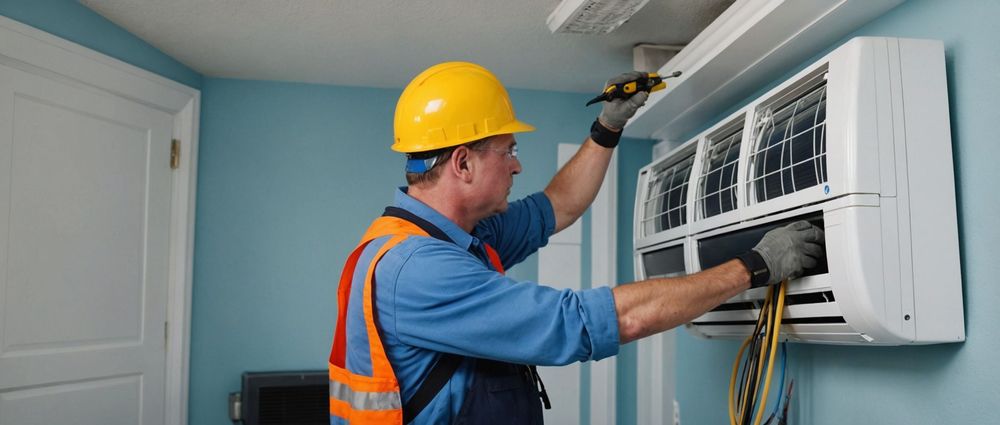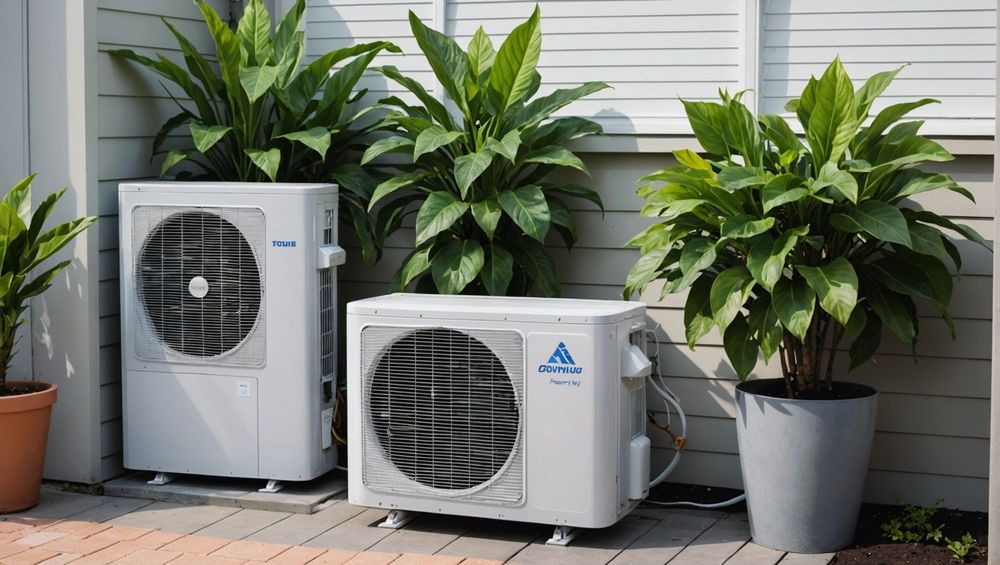A split AC unit is an air conditioning system that provides cooling comfort by separating its components into two main parts: an indoor unit and an outdoor unit. Unlike traditional window units, split ACs are known for their efficient and quiet operation, making them a popular choice among homeowners and businesses. These units can effectively cool individual rooms or spaces without taking up window space. This article will delve into the working principles of split ACs, their benefits, installation, maintenance, and key features that make them an ideal choice for climate control.
How Does a Split AC Unit Work?

The functioning of a split AC unit revolves around the principles of thermodynamics and refrigeration. The split system comprises two main components: the indoor unit, which houses the evaporator coil and fan, and the outdoor unit, which contains the compressor and condenser coil. Together, these components work to draw in warm air from the room and expelling it outside, while circulating cool air back indoors. Here’s how it works in detail:
- Air Intake: The indoor unit draws in hot air through the evaporator coil.
- Cooling Process: Refrigerant absorbs the heat from the indoor air and evaporates into gas.
- Compressor Action: The gaseous refrigerant is compressed in the outdoor unit, raising its temperature and pressure.
- Heat Release: The gas releases heat as it passes through the condenser coil and condenses back into a liquid.
- Circulation: The cycle repeats as the cooled air is circulated back into the room.
This efficient process enables split AC units to quickly and effectively cool a space, maintaining a comfortable indoor climate even during the hottest days of summer.
Benefits of Split AC Units

Split AC units present numerous advantages over conventional air conditioning systems. These benefits encompass efficiency, ease of installation, versatility, and improved air quality. Below are some key benefits:
- Energy Efficiency: Split ACs are designed to consume less energy, which can lead to lower utility bills.
- Quiet Operation: The outdoor unit operates quietly away from living spaces, resulting in minimal noise indoors.
- Flexible Installations: Split ACs can be installed in various configurations, making them ideal for unconventional spaces.
- Zone Cooling: They allow for individual room temperature control, catering to the specific comfort levels of different occupants.
- Enhanced Air Quality: Many split ACs come equipped with air filters that help remove dust, allergens, and pollutants from the air.
Installation of Split AC Units
Installing a split AC unit requires professional assistance to ensure it operates efficiently and safely. The installation process typically involves several steps, starting from evaluating your space to selecting the appropriate capacity. Here are the key steps involved:
- Assessment: A technician evaluates the space to determine the optimal location for both the indoor and outdoor units.
- Mounting the Indoor Unit: The indoor unit is securely mounted to the wall, usually near an electrical outlet.
- Installing the Outdoor Unit: The outdoor unit is placed on a stable surface, usually at ground level or on a wall bracket.
- Refrigerant Line Connection: Insulated refrigerant lines are connected between the indoor and outdoor units.
- Electrical Wiring: Proper wiring is carried out to connect the units to the power supply.
- Testing and Calibration: After installation, the system is tested to ensure it is functioning properly.
Proper installation plays a crucial role in the performance and longevity of split AC units, making it essential to hire qualified professionals.
Maintenance of Split AC Units
Regular maintenance is vital for keeping split AC units running efficiently and prolonging their lifespan. Maintenance tasks are generally simple and can often be performed by homeowners, although professional servicing is recommended at least once a year. Key maintenance tasks include:
- Cleaning or Replacing Filters: Dirty filters can restrict airflow and lead to inefficiency. Clean or replace them regularly.
- Inspecting Coils: Periodically clean the evaporator and condenser coils to remove dust and debris that may affect performance.
- Checking Ductwork: Ensure that ducts are sealed and insulated properly to minimize energy loss.
- Clearing Drains: Ensure the drain channels are clear of clogs, which can cause water leakage.
- Professional Servicing: Schedule annual inspections with a HVAC technician to address potential issues.
By following these maintenance practices, homeowners can ensure their split AC units operate optimally throughout the year.
Conclusion
Split AC units are an efficient and comfortable solution for climate control in various settings. With their dual-unit design, energy efficiency, and quiet operation, they offer significant benefits over traditional coolers. Understanding the basics of how they work, their installation requirements, and maintenance practices can empower you to make informed choices about air conditioning systems that best suit your needs. Whether you’re cooling a small room or creating a comfortable environment in a larger space, split AC units remain a reliable choice.
FAQs
1. How much do split AC units cost?
The cost of split AC units can vary widely based on the brand, capacity, and features. On average, the price range is between $700 to $2,500, excluding installation costs.
2. How long do split AC units last?
With proper maintenance, split AC units typically last between 10 to 15 years. Regular service can extend their lifespan significantly.
3. Can I install a split AC unit myself?
While some parts of the installation can be done by homeowners, it is highly recommended to hire professionals for full installation to ensure safety and efficiency.
4. What size split AC unit do I need for my room?
The size of the AC unit required depends on the room’s square footage. A technician can perform a load calculation to determine the correct capacity for optimal cooling.
5. Are split AC units energy-efficient?
Yes, split AC units are generally more energy-efficient than traditional window units, often boasting higher SEER (Seasonal Energy Efficiency Ratio) ratings, which helps in reducing electricity bills.



